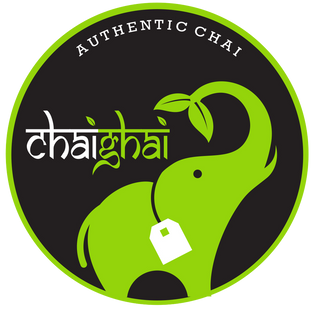"The state of mind must be belief, not mere hope or wish. Open-mindedness is essential for belief. Closed minds do not inspire faith, courage, and belief." - Napoleon Hill

Mindfulness can only occur when the mind is open. We allow our mind to get stuck in thoughts of the future and past, removing us from the moment. Through acknowledging every breath we take, one of the more rudimentary bodily functions performed, we can return to the moment, and find some appreciation in just breathing. Just as chai plays a vital part of everyday life in India, breathing as advocated through yoga and meditation is important to the synchronicity between the mind body and spirit connection. The number of breathing exercises found in Indian culture can at first be daunting. We’ve chosen to focus on four breathing exercises that promote mindfulness through the use of yoga and meditation. Pranayama, the practice and focus on breath control in yoga and meditation is at the core of elevating consciousness. These four exercises we wish to highlight are central to the ways that spirituality and connection can be heightened through breathing. Returning to the moment through the simplicity of breathing is exemplified in these four exercises:
- Warrior Breathing
- Box Breathing
- Lion’s Breath
- Mindful Breathing

It is first pertinent to talk about Pranayama, which in yoga is the maintenance of breath through certain techniques and exercises. In Sanskrit Pranayama means the control of life energy and is the regulation of breath used predominantly in yoga and meditation. Pranayama is mentioned in the Bhagavad Gita, one of the holy scriptures of Hinduism and also Yoga Sutras of Patanjali, a collection of Sutras on the theory and practice of Yoga. These texts have an incredibly large influence on Indian culture and are essential to the study of those seeking enlightenment. Pranayama is also a component of Hatha Yoga, as found in the 15th century Pradipika, a Hatha Yoga manual that features Kumbhaka, a form of breath retention. It is often said as related to this text that the ultimate goal of Pranayama is the suspension or cessation of breathing; Kevala Kumbhaka, to exert complete control over breathing. Meditative Breathing has played a vital part in Hinduism and Indian culture for centuries and both are vital to the quest for mindful oneness through the mind body and spirit connection. We seek a similar experience when sipping a cup of chai after our breathing exercises have been completed, a practice that also supports an open mind and heightened consciousness.
Pranayama Benefits for Physical and Emotional Health (healthline.com)
1. Warrior Breathing

Warrior Breathing, known as Ujjayi, which in Sanskrit means victorious, is often synonymous with the Asana practice or yoga as exercise. It is a technique of breathing that originates in the diaphragm and works its way up into the throat. This type of intense deep breathing is said to open up the Root and Sacral Chakras used heavily in physical activity. By inhaling and exhaling through the nose an ocean sound is created and as such Ujjayi is also sometimes known as ocean breathing. This practice creates a rushing sound as air moves in and out of the Glottis, the opening between the vocals cords, where the length and speed of breath are controlled by the diaphragm. A strong proponent for the benefits of this type of breathing is Dr. Belisa Vranich, who has written a number of books on the subject. Her books include Breathing for Warriors, with Brian Sabin, that demonstrates the science and techniques behind efficient breathing for warriors and how they can get people back in touch with their body’s, through breathing. Warrior Breathing is further known for its use in training and aids in faster recovery after intense physical exertion. It can be thought of as a bridge that connects our organs and helps them regulate air in the most optimal way possible and thus enhancing overall body strength, mindfulness and heightened awareness. This kind of breathing is no longer just used on the battlefields, but also to battle day to day stress and clear our mind for the present, combating anxiety and expanding time to its infinite.

https://www.6dragonskungfu.com/breathe-yoga-the-warrior-s-breathing/
http://warriorfitness.org/breathing-for-strength-vitality-and-performance/
Ujjayi Breathing: What It Is, How to Do It, Benefits, and More (healthline.com)
About Dr. Belisa — The Breathing Class
2. Box Breathing

Box Breathing is another way in which breathing can be applied to an active and mindful lifestyle in that it can slow down breath and thus reduce overall stress, while promoting fluidity of breath and movement. The practice of Box Breathing as coined by Mark Devine, a former Navy Seal, encompasses deep breathing with a breath in and out for every 4 seconds. Using this notion of 4 seconds Mark Devine wrote a book titled Unbeatable Mind, which seeks to unlock the potential of consciousness through this breathing technique. Expanding our consciousness allows us to overcome the fight or flight sensations driven by the parasympathetic nervous system, thus creating an unbeatable mind. Box Breathing works as a relaxation technique as it deems to distract the mind through the counting method, thereby calming stress on the body and nervous system. Through creating a steady rhythm of breathing, Box Breathing can help improve focus by visualizing the four sides of a square while inhaling and exhaling to the count of 4. The principals of Box Breathing date back to Chinese and Japanese martial arts and allow practitioners to perform a complicated set of moves without having to think about each one, creating a steady flow of movement. By centering consciousness around breath, Box Breathing allows for increased mental clarity and consciousness, as attention on the rising and falling of breath in the chest or stomach is the focal point. Clarity can be resumed as we practice this exercise in times of stress and uncertainty that we face throughout the day. Once mastered, Box Breathing has tremendous advantages in the fight against anxiety and the overall push towards oneness and stronger mental health.

Box Breathing: Getting Started with Box Breathing, How to Do It, Benefits and Tips (webmd.com)
https://maartial.com/mind/use-this-warrior-spirit-breathing-technique-to-combat-stress/
https://www.medicalnewstoday.com/articles/321805#the-box-breathing-method
https://unbeatablemind.com/3-breathing-exercises-you-should-know/
3. Lion’s Breath

Lion’s Breath, Simhasana in Sanskrit, meaning lion’s seat or posture, is a technique of breathing characterized by opening the mouth wide and sticking out the tongue and roaring, much like a lion does. This practices works to both relax and stretch the face and neck as well as clear the throat, as these muscles can tense up from speaking or concentrating. It is further performed in a kneeling position with arms and hands stretched outspread to encourage openness. Lion’s Breath is said to help open up the Throat Chakra which aids in communication and connection between individuals and the self. It can also be useful in stimulating energy circulation in the body which supports body mindfulness and core strength in yoga and meditation. By repeating Lion’s Breath at least 3 consecutive times it is also possible to accomplish Bandha’s, or body locks, central to Hatha Yoga. The movements used while executing Lion’s Breath engage 3 Bandha’s including, Root Lock-Mula Bandha, Abdominal Lock-Uddiyana Badha and Chin Lock-Jalandhara Bandha. By using a forceful exhalation of breath, negative energy can be expelled from the body. When practiced it is important to find balance within the movements, to release inhibitions that deem to hold back the mind body and spirit connection. Lion’s Breath is a useful technique in order to center emotions and seek mindful open dialogue with the self and a stronger connection to the universe’s cosmic energy.

Lion's Breath Benefits and How to Roar (healthline.com)
What is Lion's Breath? - Definition from Yogapedia
How to Do Lion's Breath (Simha Pranayama) (verywellfit.com)
4. Mindful Breathing

When practicing Mindful Breathing it is important to maintain a comfortable position in order to be able to use a slow repetition of breath in through the nose, hold and then out through the mouth. By focusing intently on each breath, the 7 Chakras can work in synchronicity to create balance and openness of the self. Recognizing that air enters the body through our nose, it is in important to recognize what is actually occurring in the moment, while solely breathing. Is the air cold, is our chest or abdomen tight? Understanding and being cognitively aware of the actual experience is of the utmost importance. Mindful meditation is considered the best way of returning to the moment. Being mindful of one’s breath and only one’s breath removes all external distractions from the mind. It gives us ultimate focus on one activity. Sifting distractions from the mind provides us with clarity and removes anxiety found in future moments. Enlightenment of one’s mind can occur only when it is clear, and recognizing the experience of breathing, can truly help clear one’s mind. Mindful meditation is so important in Indian culture because of the notion that breath is strength and that strength can lead one to become the best version of themselves. The use of Mindful Breathing creates an extension of spirit as it is used to connect the body to the mind and create a synergy among them all for a greater sense of awareness and open-minded possibility.

Mindful Breathing | Practice | Greater Good in Action (berkeley.edu)
https://www.healthline.com/health/breath-of-fire-yoga#bottom-line
The Hindu Tradition of Breath Meditation

The four methods of breathing highlighted above are only a few of the techniques that show how important mindfully approaching breathing can be towards fostering a more open-minded consciousness. Yoga and meditation can open up our Root Chakra much the same way the Earthly spices found in chai can. Chai is such a large part of daily life in Indian culture. Likewise mindful breathing, enhanced through the practices of yoga and meditation, are also heavily ingrained in the Indian way of life. While focusing on the many ways that yoga, meditation and an active lifestyle can promote a strong mind body and spirit connection, Warrior, Box, Lion’s and Mindful Breathing demonstrate how open consciousness is vital in centering self and fostering higher perception and enlightenment. These four types of breathing have many mental, physical and spiritual benefits including stress reduction and enhanced concentration, respiratory and digestive improvement as well as increased mindfulness and higher levels of consciousness. By taking the time to focus on each breath the slow and steady approach takes precedence over the speed of the movement, creating an even tempo for maximum relaxation and clarity. Breathing is such a simple and often overlooked bodily function. When we really hone in on our breathing we can truly recognize its importance


